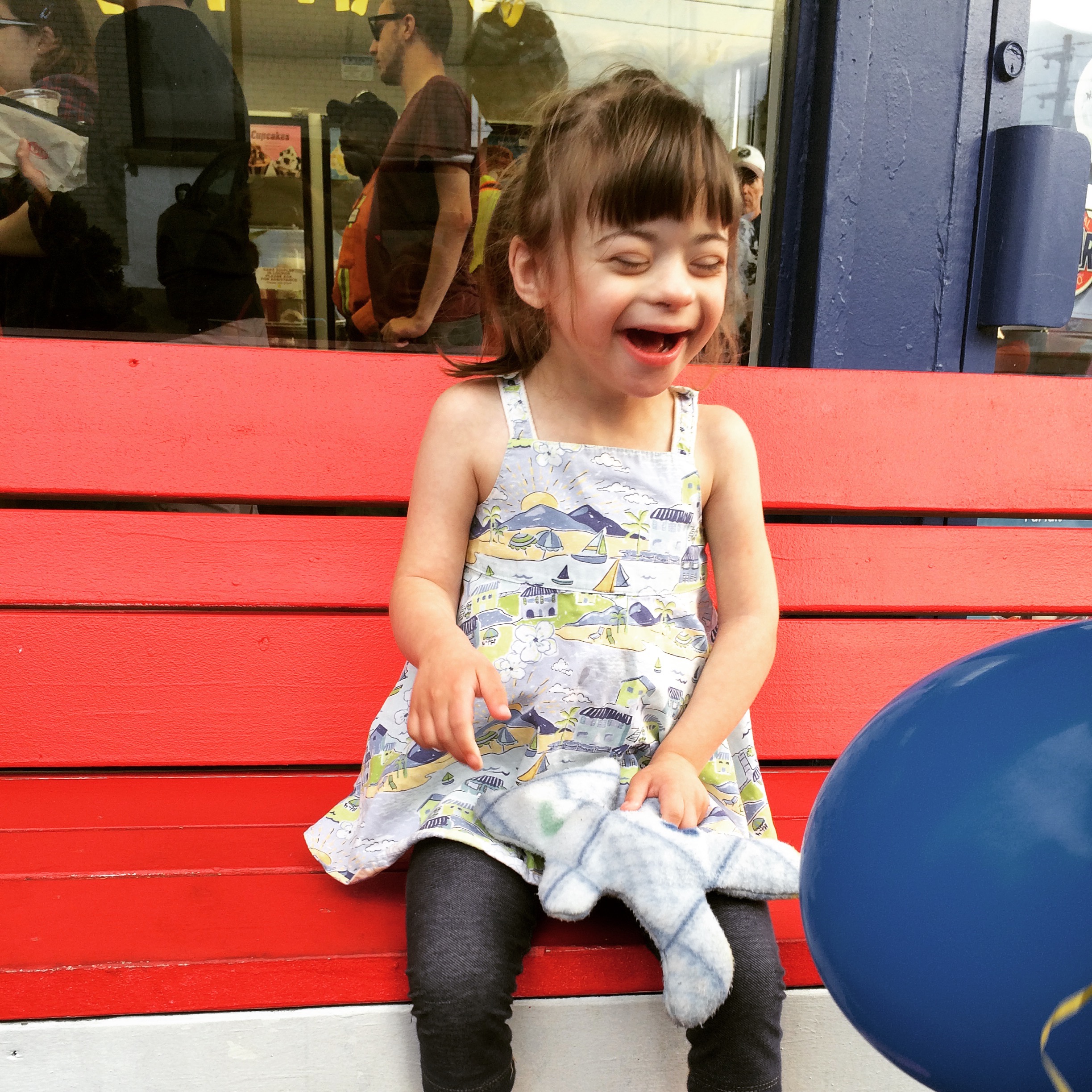The moment that Lily’s surgeon started talking is captured like a snapshot in my mind. For me, it’s the line in the sand that defined “before” and “after”. We, unlike so many parents of children with Congenital Heart Defects (CHD), knew of Lily’s original heart issues, AVSD and Coarctation of Aorta; we were prepared for those, had read up on the conditions, the surgeries, the possible outcomes and the possible complications; we were ready. We were not ready for PVS.
He never said the words PVS, he never uttered the phrase “pulmonary vein stenosis”, he just explained that in previous ECHO’s they had suspected that Lily’s pulmonary veins were narrowing and when they opened up her chest they were able to confirm that this was the case. He told us that they had attempted to fix the veins using the “Cole’s Procedure” and they were happy with the immediate results, but…
If I’m being picky, that “but” is the actual line.
But…it’s not often, he told us, that the Cole’s Procedure fixes the problem permanently. This was not like the AVSD and the COA where, once the surgeries are complete, the chances are quite high that no further surgeries will be needed and most patients can go on to live a “normal” life. He went on to explain that when the pulmonary veins start to close, even after surgical intervention, they usually continue to close which causes the heart to work harder to pump the blood out to the body and that extra work causes the heart to fail. He told us that when that happens, it’s often fatal.
Fatal. I truly do believe that our surgeon was trying to be kind by not giving us a name. In the world of Dr. Google, too much information can create unnecessary panic, but I wish that he had told us. I wish that he had given us those 3 words – Pulmonary Vein Stenosis – so that we knew where to start looking. Instead, I found myself in front of Dr. Google, just typing in random words that I remembered and hoping that something would click. But not giving us the words, every time that I landed on a page that sounded like what he had explained to us, I began to get even more scared because there weren’t many articles (and no wiki page! How is that even possible in this day and age?), but the ones that I did find all said the same horrible things: rare, progressive, fatal. I worked up the courage to ask one of the CCCU nurses is this is what Lily had; did she have PVS?
I truly do believe that our surgeon was trying to be kind by not giving us a name. In the world of Dr. Google, too much information can create unnecessary panic, but I wish that he had told us. I wish that he had given us those 3 words – Pulmonary Vein Stenosis – so that we knew where to start looking. Instead, I found myself in front of Dr. Google, just typing in random words that I remembered and hoping that something would click. But not giving us the words, every time that I landed on a page that sounded like what he had explained to us, I began to get even more scared because there weren’t many articles (and no wiki page! How is that even possible in this day and age?), but the ones that I did find all said the same horrible things: rare, progressive, fatal. I worked up the courage to ask one of the CCCU nurses is this is what Lily had; did she have PVS?
Rare, progressive, fatal…and yes.
Now I had 4 words that just kept replaying themselves over and over in my head, but at least I had a name. I had the tools to really start trying to figure it all out for myself, not in medical terms or in statistics, but in real-life examples, because even when there is no Wiki page, there is Facebook. And within a minute of typing PVS into the search bar, there was a group. It was just called Pulmonary Vein Stenosis and it’s a small group: 375 members from all of the world. 375 parents, siblings, grandparents, who all have heard those same 4 words: Rare, Progressive, Fatal and Yes. Suddenly though, I was seeing other words flash by me. Words like, transplant and clinical trials; photos of children starting kindergarten, grade 1, grade 5.
Fatal, it seems, is not always the case. That doesn’t mean that this group has not seen heartbreak, because PVS is rare, progressive and fatal. We have seen too many children pass away, too many family members grieving a tiny life. For us, it sadly doesn’t mean that Lily’s future is anything but unknown. By having the name, PVS, at my disposal though, I began to understand that there is hope. There is always hope. And that one word, hope, is more powerful then all of those other 3 combined. One of the members of our PVS wanted us to remember that and created this video. It’s done to remind us that we are not fighting alone.
That doesn’t mean that this group has not seen heartbreak, because PVS is rare, progressive and fatal. We have seen too many children pass away, too many family members grieving a tiny life. For us, it sadly doesn’t mean that Lily’s future is anything but unknown. By having the name, PVS, at my disposal though, I began to understand that there is hope. There is always hope. And that one word, hope, is more powerful then all of those other 3 combined. One of the members of our PVS wanted us to remember that and created this video. It’s done to remind us that we are not fighting alone.
There is always hope in the Faces of PVS. Please watch and share.
